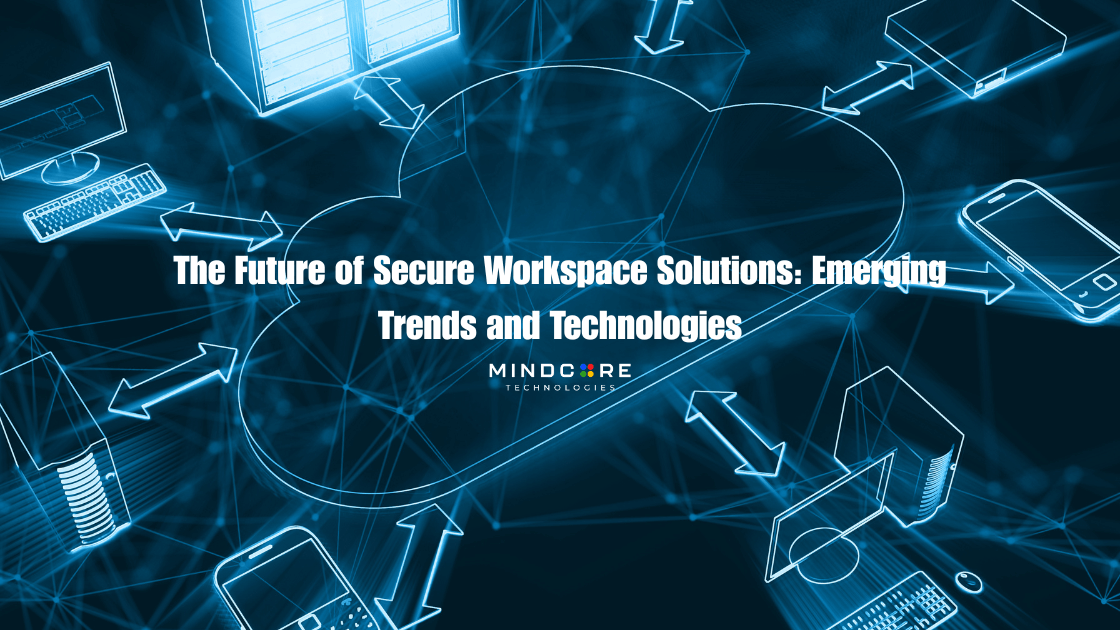What’s next for secure workspaces? AI-driven tools, smarter access control, and hybrid infrastructure are only scratching the surface. If your team’s already spread across cities, devices, or even continents, one question matters more than ever: how do you keep that setup secure and productive?
Secure workspace solutions are evolving to meet that challenge—and fast. This blog walks through the trends shaping their future. From automation to analytics and cloud tech that moves with your business, we’ll show what’s changing and how it impacts your team.
Smarter Security With AI and Automation
AI is no longer just a buzzword—it’s becoming a core part of how secure workspace platforms operate. Instead of relying on manual detection, platforms are using machine learning to identify threats in real time.
These tools look at how users behave. If someone downloads files they usually don’t touch or logs in at odd hours, AI flags it. Some platforms even adjust permissions automatically based on that risk.
This kind of automation reduces the load on IT teams while improving reaction times. It also fits into larger systems that support intelligent workflows and automated security policies, which many secure workspaces now build into their foundation.
Zero-Trust Access Gets Smarter
The concept of zero-trust is not new, but it has changed considerably. It used to say “don’t trust anyone, verify everything,” but now it evolves into adaptive systems that check not only who you are, but also where you’re at and on what device you’re operating and how you’re behaving.
This adaptive model of zero trust real-time adjusts. A user logging in from a known trusted device at the office may have full access. When that person logs in from an unrecognized laptop at a coffee shop, he or she receives restricted access or will have to re-verify.
This level of granularity is key for remote teams and distributed workplaces. It is also among the top features that enterprises look for in comparing secure workspace vendors.
Virtual Desktops That Feel Local
Many teams today rely on virtual desktop infrastructure (VDI) or desktop-as-a-service (DaaS) to work across devices. But performance used to be an issue, especially for design, dev, or data-heavy work.
That’s changing. GPU-powered cloud desktops, faster storage, and smarter bandwidth use are making virtual desktops feel just as smooth as working on a local machine.
This update is especially important for teams in creative industries, software development, or any field that relies on resource-heavy applications. It also makes VDI more appealing for organizations that need high performance without the burden of managing hardware.
These upgrades reflect how core technologies inside secure workspace platforms continue to evolve to meet real-world user needs.
Workspaces That Move With You
The future is hybrid, and not just for workers. Infrastructure is becoming hybrid, too. Companies want the flexibility to move workloads between on-premise servers, public cloud, or even across multiple cloud providers.
Secure workspace platforms are now being built with containerization, Kubernetes, and orchestration tools under the hood. This means better agility for IT teams and better resilience during outages.
Let’s say your main cloud provider goes down. A strong platform can shift sessions and files to another location, keeping your team running. These hybrid setups also help with disaster recovery, which is a growing concern for distributed businesses.
Built-In Privacy and Compliance Features
New privacy laws are being introduced around the world. That means more pressure on businesses to track access, store data safely, and provide full audit logs.
Modern secure workspace solutions now build this into their design. With features like session recording, automated policy enforcement, and role-based access control (RBAC), platforms help teams meet compliance standards like GDPR, HIPAA, and ISO 27001 without slowing down.
Here’s how these requirements match with what secure workspaces offer:
| Compliance Standard | Requirement | Workspace Feature That Supports It |
| GDPR | Data encryption, user access control | Encryption at rest & transit, RBAC |
| HIPAA | Audit logs, session tracking, secure access | Session recording, endpoint isolation |
| ISO 27001 | Risk management, continuous monitoring | Real-time analytics, policy enforcement |
| SOC-2 | Availability, confidentiality, integrity | Automated reporting, access logging |
| PCI-DSS | Secure payment data handling, activity logs | File encryption, user action tracking |
This approach—often called privacy by design—removes the guesswork. You don’t need to add tools after the fact. You get compliance support from day one.
This is especially important for industries like finance, healthcare, and legal services, where regulations change fast and failure comes with serious fines.
More Insight With Better Analytics
Security isn’t just about stopping threats. It’s also about understanding how your systems are used. Future-ready workspaces will offer smarter dashboards that track access patterns, app usage, and user behavior in one place.
These insights help IT teams spot inefficiencies, flag risky behavior, or simply understand which tools are used most. This is part of the continuous improvement that secure workspaces now support.
Some platforms are even layering in predictive analytics. That means spotting risks before they become incidents. The smarter your data, the faster your decisions.
Supporting the Teams of Tomorrow
Remote work isn’t slowing down. Neither is global hiring. That means secure workspaces need to support all types of teams—from freelance developers to fully remote legal firms.
The future of secure workspace solutions includes:
- Fast onboarding with pre-built templates
- Language and regional support for global teams
- Adaptive UI based on user role or device type
This flexibility is why more teams are moving away from basic VPNs and toward full-featured platforms. It’s also why businesses are prioritizing solutions that work out of the box but grow as they do.
Real Use Cases Show It’s Already Happening
We’re not just predicting these changes—they’re already in motion. In recent case studies, teams in healthcare, retail, law, and software development have already deployed these technologies.
Some saw stronger compliance. Others cut onboarding time or software costs. Many simply created smoother workflows for teams spread across cities or even countries.
Their stories prove that secure workspace platforms aren’t just about security. They’re about enabling better work.
Wrapping It Up: A Smarter Way to Work
The best secure workspace platforms do more than protect. They adapt. They learn. They simplify how your team works while staying steps ahead of today’s threats.
From AI and analytics to hybrid cloud and built-in compliance, these tools are no longer reserved for large enterprises. With providers like Mindcore delivering solutions powered by modern tech stacks, even lean teams can access future-proof setups.
If you’re planning to modernize how your team works, start by learning how secure workspaces solutions are being implemented today.


